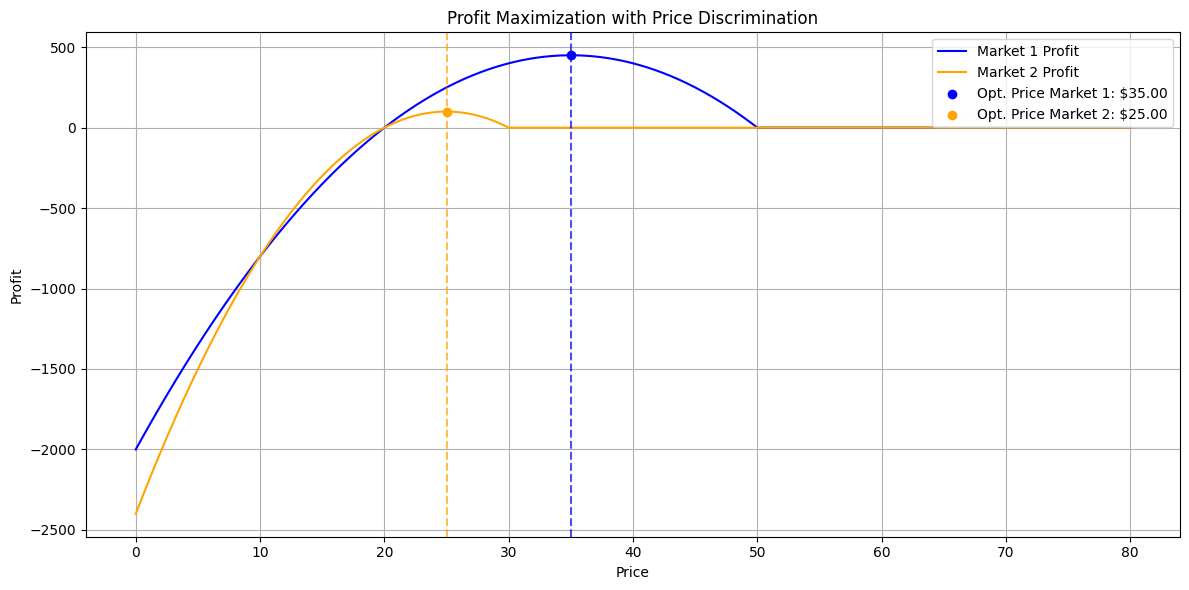Problem Statement: Price Discrimination in a Monopoly
Objective:
A monopolist sells its product to two distinct markets with different demand elasticities.
The monopolist can price discriminate, setting different prices for each market to maximize overall profit.
The goal is to:
- Simulate the optimal pricing strategy for the monopolist.
- Compute the quantities sold and profits in each market.
- Visualize the results to illustrate price discrimination.
Assumptions
Demand Functions:
- Market 1: (Q1=a1−b1⋅P1)
- Market 2: (Q2=a2−b2⋅P2)
P1 and P2 are prices set in each market.
Profit Function:
The monopolist’s total profit is:
π=(P1−c)⋅Q1+(P2−c)⋅Q2
where c is the marginal cost.Goal:
Maximize π by choosing optimal P1 and P2.
Python Code
1 | import numpy as np |
Explanation of Code
Demand Functions:
- Market 1 has a lower price sensitivity (b1<b2), indicating it is less elastic.
- Market 2 is more elastic (b2>b1), meaning customers are more price-sensitive.
Profit Maximization:
- The monopolist maximizes profit by finding the best prices for each market using
scipy.optimize.minimize. - The constraints ensure prices are at least equal to the marginal cost.
- The monopolist maximizes profit by finding the best prices for each market using
Visualization:
- The revenue curves for both markets show how profit changes with price.
- The optimal prices for both markets are highlighted.
Results
ptimal Price in Market $1$: $35.00 Optimal Price in Market $2$: $25.00 Quantity Sold in Market $1$: 30.00 Quantity Sold in Market $2$: 20.00 Total Profit: $550.00
Optimal Prices:
- The monopolist sets a higher price in the less elastic market (Market 1).
- The price is lower in the more elastic market (Market 2).
Quantities and Profit:
- The quantity sold is higher in Market 2 due to its larger demand intercept.
- The monopolist achieves maximum profit by price discrimination.
Graph:
- The revenue curves illustrate the profit-maximizing prices visually.
- The points of tangency indicate the optimal strategy.
